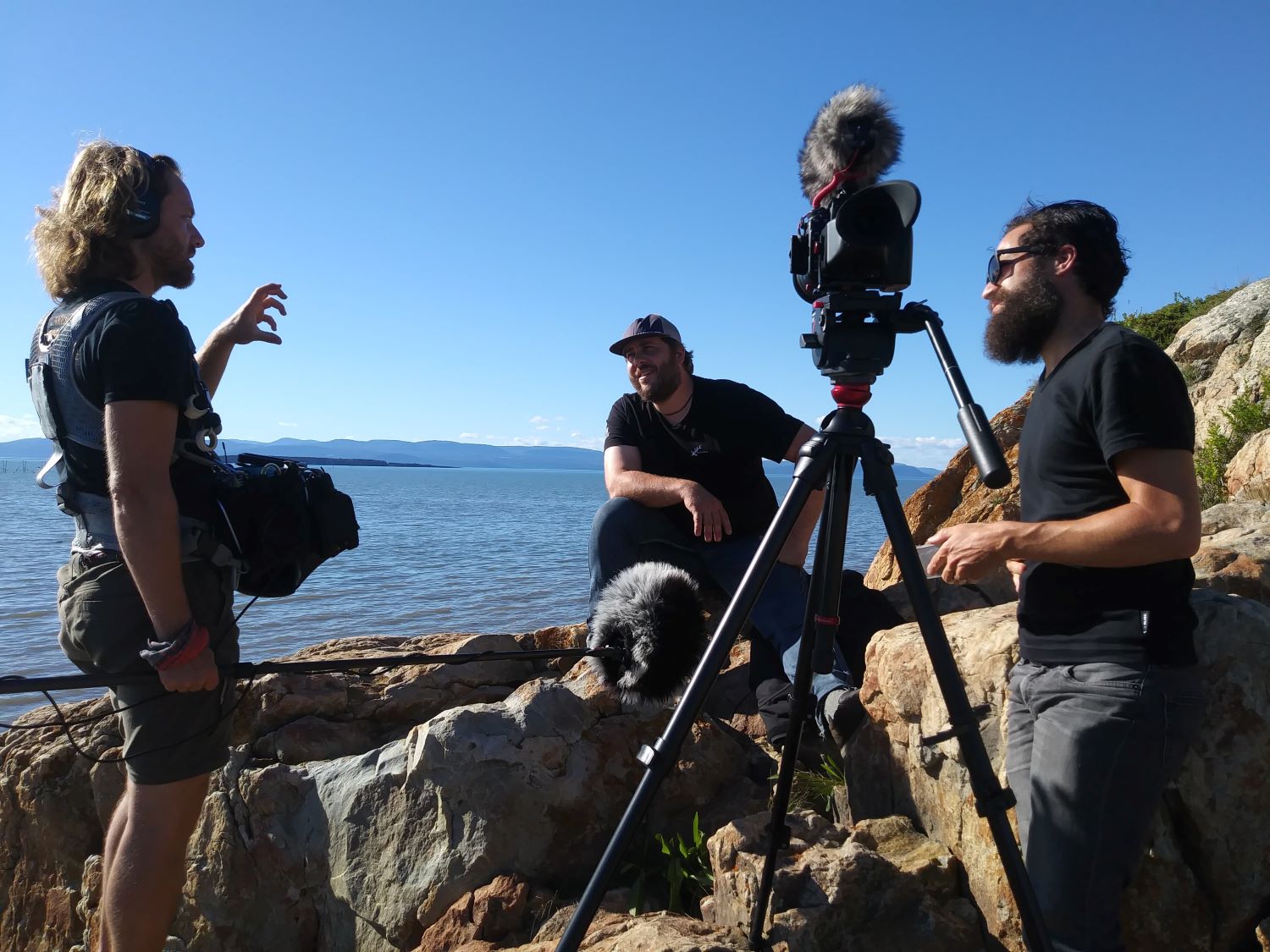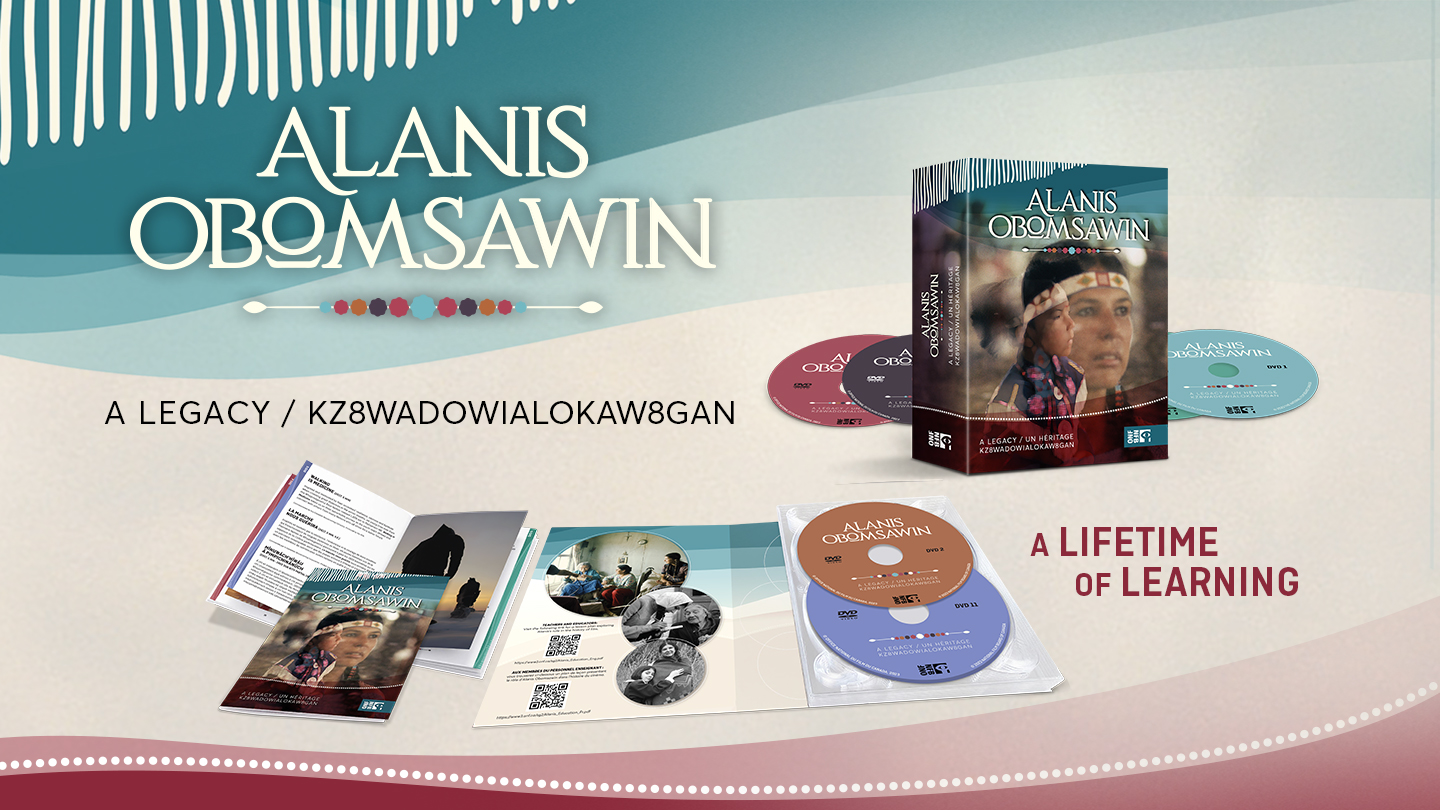Decentralization of government and resources has ever been an intractable challenge, and few modern states serve their regions as well as they do their cities, whether it be in health care or the arts. Those in the centre benefit from proximity to power, decision-making, and money. Cinema, as part of the larger network of publicly funded services, is no exception to this rule. And the city–country imbalance experienced by filmmakers established in Quebec’s hinterlands was accentuated by the pandemic, as some regions saw their populations grow by up to 25 percent.
In 2016, at the Forum of Montreal’s International Documentary Festival (MIDF/RIDM), several significant producers and directors met as part of a panel entitled “Territories of Documentary,” a discussion of issues and challenges facing filmmakers outside Montreal. That initial meeting, which included independent producers and directors Nicolas Paquet, Serge Bordeleau, and Claudia Chabot, was the spark that set in motion a focused movement in support of regional film production. The first step in that process was the drafting of a “Manifesto for the Territorial Diversity of Quebec Cinema.” Some 130 regionally based directors, producers, distributors, teachers, and programmers quickly signed on.
Paquet, spokesperson and mainstay of the movement, set up his company franC doc in Kamouraska and has been producing and directing films there for a dozen years. Originally from Quebec City, he was interested in what was going on outside big urban centres and in creating images of rurality different from the crisis-laden news focus of mainstream media.
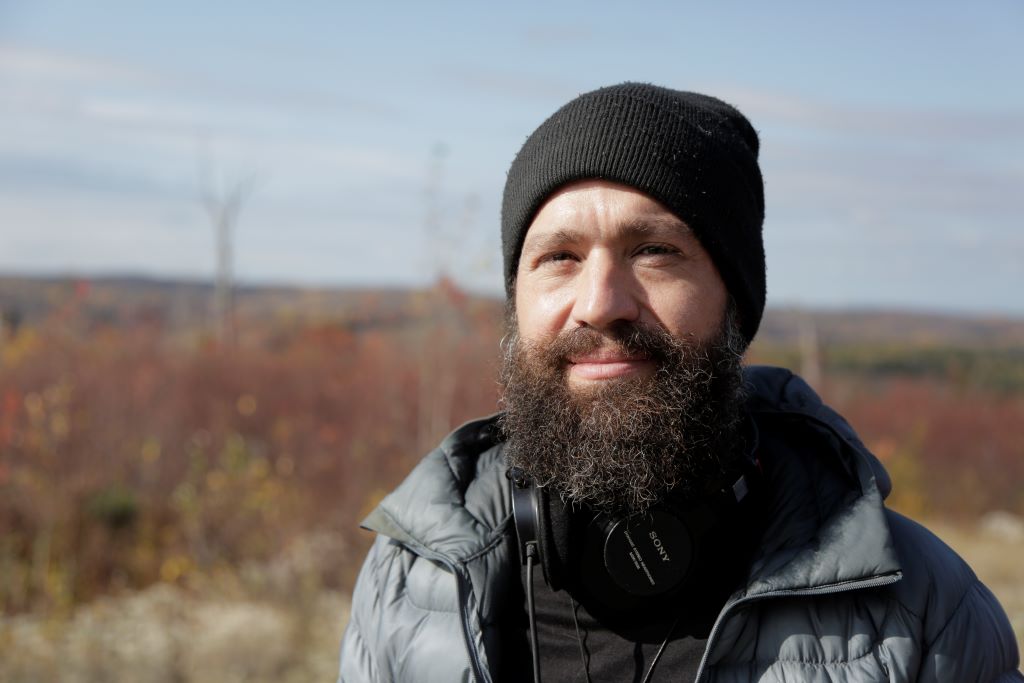
The Manifesto (included in a rough English translation at the bottom of this article) created by Paquet and others is impressively broad in its vision, calling for a decentralization of points of view, economic bases, social debates, and national memory, and for the rejuvenation of the film milieu by bringing the public closer to creators. It’s even presented as a tool for depolarizing society. In short, the Manifesto isn’t just a request for more handouts, but rather a visionary, passionate statement and proposition for a renewed role for regional cinema in nurturing a dynamic, collective film culture.
Within a short period, it produced its first offspring: La Table de concertation interrégionale en cinema (TaCIC), a loose federation of regional film and digital players, created to implement some of the Manifesto’s goals. Since its foundation in 2022, it has initiated a mentorship program, lobbied for new funding envelopes and networking opportunities, and ensured regional representation on the boards and juries of provincial funding agencies. It also supports local distribution initiatives: art centres and other collectives that counter both the content and context of commercial distribution.
Institutions were quick to respond. The National Film Board adjusted its Filmmaker Assistance Program to give regional filmmakers a 50% higher discount on post-production charges compared to Montreal doc makers. The CMF has engaged in “discoverability” sessions to improve web presence for regional actors. TaCIC now occupies a seat on the board of Québec Cinéma, which itself runs several regional programs. La Société du development des industries culturelles (SODEC), already sensitive to the needs of regional filmmakers, expanded its reach through several targeted competitions.
TaCIC has no real parallels elsewhere in Canada. Perhaps this is because Quebec is a unique ecosystem owing to its distinct language and history. Still, one can hope that the model presented by the Manifesto could be adapted to the rest of Canada.
Quebec’s film culture was born in its regions. Early documentaries were mainly anthropological, while fiction films from the post-World War II era presented idealized representations of bucolic rural life or, conversely, revealed its narrow-minded oppressiveness. The 1960s’ Quiet Revolution was a social, political, and cultural awakening in which the arts flourished, including a veritable cinematic golden age—a Quebecois New Wave in both fiction and documentary—with many internationally celebrated directors including Arcand, Poirier, Brault, Dansereau, and Perrault emerging out of it. The province’s iconic regions figured almost as characters in many of the films: Kamouraska, the mighty Saint Lawrence River, the Gaspé Peninsula, not to mention the great forests and tundra of the North. Indeed, if regional filmmakers are underrepresented today, the places they inhabit are profoundly imprinted upon the collective psyche of the people of Quebec.

Quebec’s regions also have a long history of cultivating a filmgoing public. The small city of Trois-Rivières boasts the oldest ciné-club in North America (50+ years), which shows a film per week on average, with 1,500 members and well-attended screenings. Other regions host world class events, such as the International Film Festival of Abitibi-Timiskaming; REGARD (Saguenay International Short Film Festival); and RÉSEAU PLUS, a volunteer-dependent, provincial network of parallel cinemas that feature Quebecois and international auteur films.
Given this rich history, the resources at hand, and the good will expressed by the big, centralized institutions, meeting the challenges of distance seems at once intractable and feasible. Serge Bordeleau, biologist turned filmmaker and founder of Nagadam Films in Val d’Or, one of the most underserved regional centres, insists on the need to nurture and build on the vitality that has always existed in the regions. His company is firmly anchored in place—its calling card is “Productions rooted in the territory, human and universal”—produces short fiction, documentary, and virtual reality projects and collaborates with the Anishinaabe people whose traditional lands it shares.
He agrees that the major barrier to entry remains financial, in addition to a lack of opportunities for networking—one of TaCIC’s central platforms. He adds that he feels invisible to the wider film network, despite the obvious advantages to outside productions of connecting with and tapping into locally based companies.
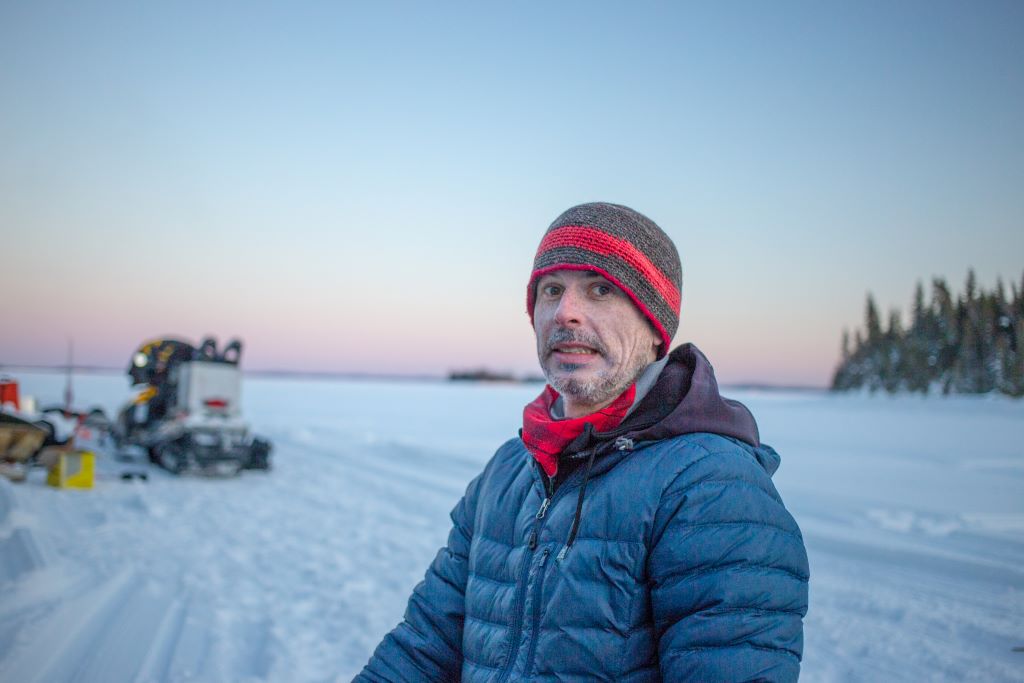
Paquet concurs. “We need to preserve what is there already and work for the creation of new funding envelopes.” As an example of the latter, he cites Saguenay’s $200,000 fund in support of short-film production with contributions from the regional government, the city, and the Ministry of Culture. But he also emphasizes that it’s not just about money; it’s also a question of visibility and representation: “We want to see ourselves in the documentaries that are produced, and someone living in a region will have a different perspective than someone coming from a big city.” He doesn’t advocate for exclusivity, but sees a need for dialogue between urban and rural filmmakers and for breaking the cycle of people applying for funding, being refused, and giving up.
Bordeleau and Paquet are representative of a majority of regional producers in Quebec: small companies producing one-offs, formed in extremis, founded by filmmakers out of necessity given the lack of regionally based firms.
Johanne Larue, director of audiovisual production and development at SODEC, cites this as the main barrier to entry, and the reason for the discrepancy that exists between the population of Quebec’s regions and the ratio of projects selected at any given funding round. 50 percent of Quebec’s population is outside Montreal, but regional productions rarely access more than 10 percent of SODEC funds. According to Larue, what is missing in the regions are larger, incorporated film companies with experienced producers and support staff that can manage several projects at different stages of production and develop strong content.
A few regional production companies have had a long life and sustained production financing. Vic Pelletier Productions in Matane, gateway to the Gaspésie, is a notable case: a very busy company with dozens of one-offs and series on its rosters, made over 40 years, with many of them rooted in the territory. A relative newcomer is Tapis Rouge Films in neighbouring Rimouski. Founded in 2013 by Evelyne Lafleur, who acquired a broad range of expertise in film before settling in her hometown and into her role as producer, the company now has a respectable roster of projects and filmmakers, including well-known director Hugo Latulippe. Lafleur emphasizes the need for dedicated producers and skilled crews in order to ensure stability in the regional industry.
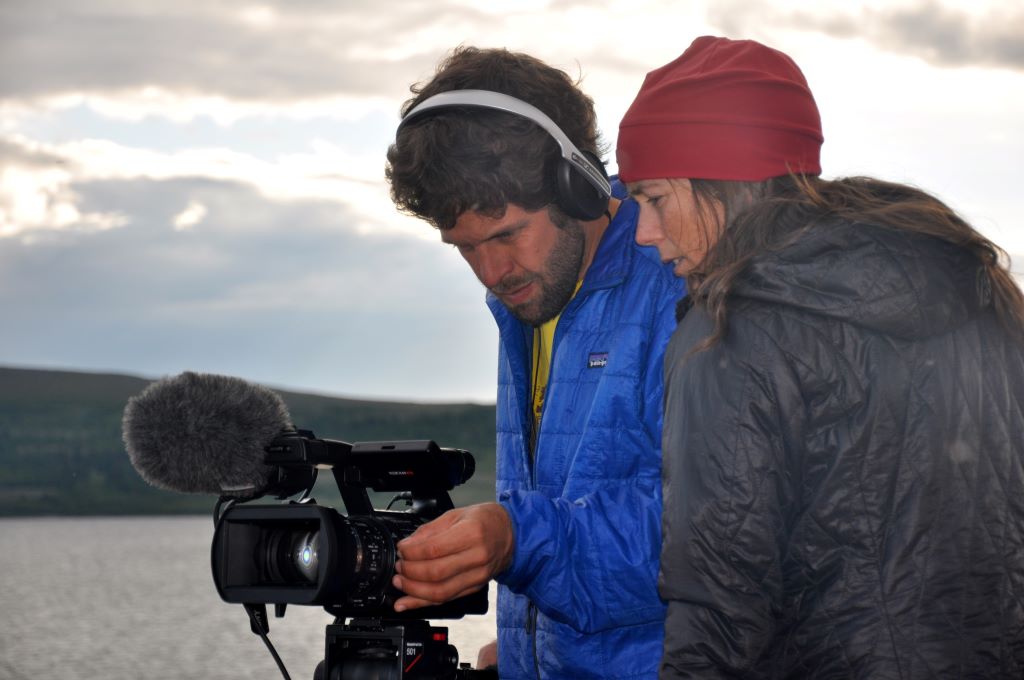
Mélanie Carrier of Mö Films, director and producer, with her partner Olivier Higgins, of multiple award-winning productions from their base in Quebec City, speaks about the importance of “territorial cinema” and of the synergy required to create such a cinematic web. She recognizes that it’s a chicken-and-egg problem: As long as there aren’t sufficiently weighty and numerous production companies in the regions, projects won’t be submitted to the agencies, and if there aren’t funds coming into the regions, the milieu will not evolve.
Mélanie considers the Montreal-based collective Les Films de l’autre a model for the regions, enabling independent filmmakers to produce their own films while benefiting from the knowledge of members. There are already a number of non-profits operating as production poles in several regions in Quebec, including SPIRA in Quebec City and Paraloeil in Rimouski. POV spoke with Claudia Chabot, founder and director of La Bande Sonimage in Saguenay, after perusing their impressive website and roster of activities, which includes training programs, information sessions, and opportunities to develop documentaries, experimental films, and short fiction by providing seed money, equipment, and mentorship. Established in 2009, Sonimage and its sister collectives fuel a dynamic regional film culture, providing critical services to both emerging and established filmmakers.
Chabot and others spoke of the positive aspects of being regionally based, which are often personal ones: There is a tranquility that not only promotes well-being on many levels—proximity to nature, away from the frantic pace of city life—but also fosters creativity, both artistically and in terms of figuring out innovative solutions to common problems. There are real advantages and opportunities. Regional companies need not be fettered by connections with the big city; they can cultivate international networks of co-production and distribution. There are also creative advantages, including the compelling stories and locations in a specific area, and the close-knit communities that bring people together to work on common projects.
Notwithstanding the enthusiasm, dedication, and commitment of its founders, TaCIC is a voluntary commitment. Keeping that ball in the air while juggling the demands that producing in the regions already entails will be its own challenge. These new activists on behalf of regional representation see their mandate as both political and creative: promoting the vitality of regions at all levels while creating works that sustain and nourish them.
***
Manifesto for the Territorial Diversity of Quebec Cinema
Manifesto for the Territorial Diversity of Quebec Cinema Considering that the vast majority of all provincial funding intended for the cinema does not come from the greater Montreal area… Considering that half of the Quebec population lives “in regions,” remote, rural, or urban… Considering that it is the mandate of funding organizations to support the projects of independent filmmakers throughout the territory…
We ask that relevant, concrete, and lasting actions be undertaken and that clear policies be put in place to multiply the poles of production in the four corners of Quebec. Such measures will guarantee a more diversified society, a fairer distribution of resources, and an industry less dependent on large companies, which too often tend to garner the biggest pieces of the pie. More concretely, a cinema from a diversity of territories means:
- a broader horizon of points of view, production methods, themes, and issues;
- a voice and a mirror for populations whose discourse and ideas do not come across sufficiently in the mass media;
- a means of stimulating the economy and of increasing the presence of young people, families, and talents everywhere;
- a platform for discussing societal challenges;
- a source of pride for those behind and in front of the screen, as well as those who recognize themselves in the faces and stories brought to the screen;
- a national memory that is not limited to the vision, relevant but insufficient, of those who are close to the institutions, places of decision-making, and a diverse but concentrated industry;
- a way of bringing audiences closer to creators in order to stimulate attendance at Quebec cinemas, while attacking the prejudices related to the status of artists;
- a real possibility of dialogue between urban and rural cultures to counter the polarization of our society.
We—filmmakers, creative organizations, festivals, producers of the seventh art—believe that it is not enough to distribute works in rural areas. The role of spectators is not sufficient, neither for us, nor for all those who live in rural and remote areas. The know-how and the productions must emerge from the four cardinal points. Already, poles exist or are emerging. For example, in Quebec, Saguenay, Abitibi, Estrie, and Bas-Saint-Laurent. A dynamism has emerged and a firm desire to break through the screens animates us. We have a lot to contribute. What is missing is the support that will change the game. The necessary impetus so that, once launched, all regions are better financed and equipped to produce their cinema in their own way. The foundation is there; the will is there, too. The only thing missing is the means. Let’s turn the tide.




